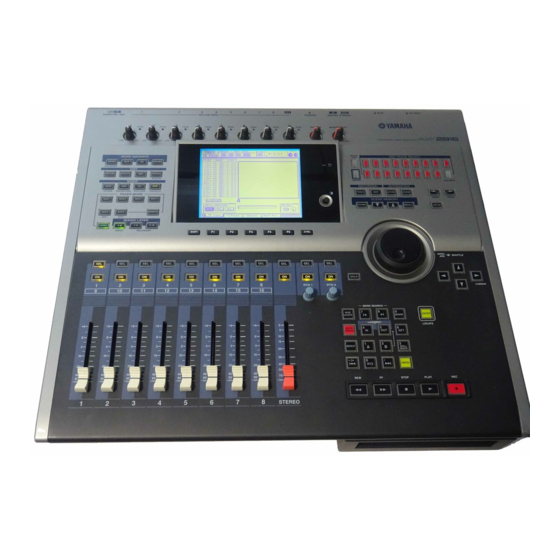Yamaha AW2816 Podręcznik - Strona 8
Przeglądaj online lub pobierz pdf Podręcznik dla Instrument muzyczny Yamaha AW2816. Yamaha AW2816 32 stron. Professional audio workstation, recording101
Również dla Yamaha AW2816: Instrukcja obsługi (2 strony), Aktualizacja instrukcji (2 strony), Samouczek (31 strony)

Construction of a Condenser Microphone
On the AW2816, XLR Inputs 1 and 2 can supply phantom power to a condenser microphone.
Inputs 3-8 are not capable of this. If a condenser microphone is to be connected to inputs 3-8 an
external phantom power supply should be used. The 'PHANTOM' [ON/OFF] power switch on
the AW2816 should only be turned on when a microphone that requires phantom power is
connected to input 1 or 2. Caution is required when using phantom power on the AW2816 as it
is possible to damage older ribbon microphones and equipment with unbalanced outputs if they
are connected to input 1 or 2 with the phantom power switch turned to ON.
Condenser microphones generally have very good sonic quality and are used in a wide range of
applications. For vocals, a condenser microphone with a large diaphragm would be a good
choice. For acoustic instruments such as acoustic guitar a small diaphragm condenser
microphone is often used.
Ribbon Microphones
Ribbon microphones are similar to dynamic microphones in design. A ribbon microphone has a
very light, thin, corrugated metal ribbon stretched within the air gap of a powerful magnet. The
ribbon is clamped at the ends, but is still free to move within the air gap. As sound waves strike
the ribbon it vibrates and cuts the magnetic lines of force within the air gap. This produces an
electrical signal that is a representation of the sound wave. The electrical signal that is produced
is usually very low-level so a ribbon microphone will also incorporate a transformer. The
transformer will help to boost the level of the signal.
5
